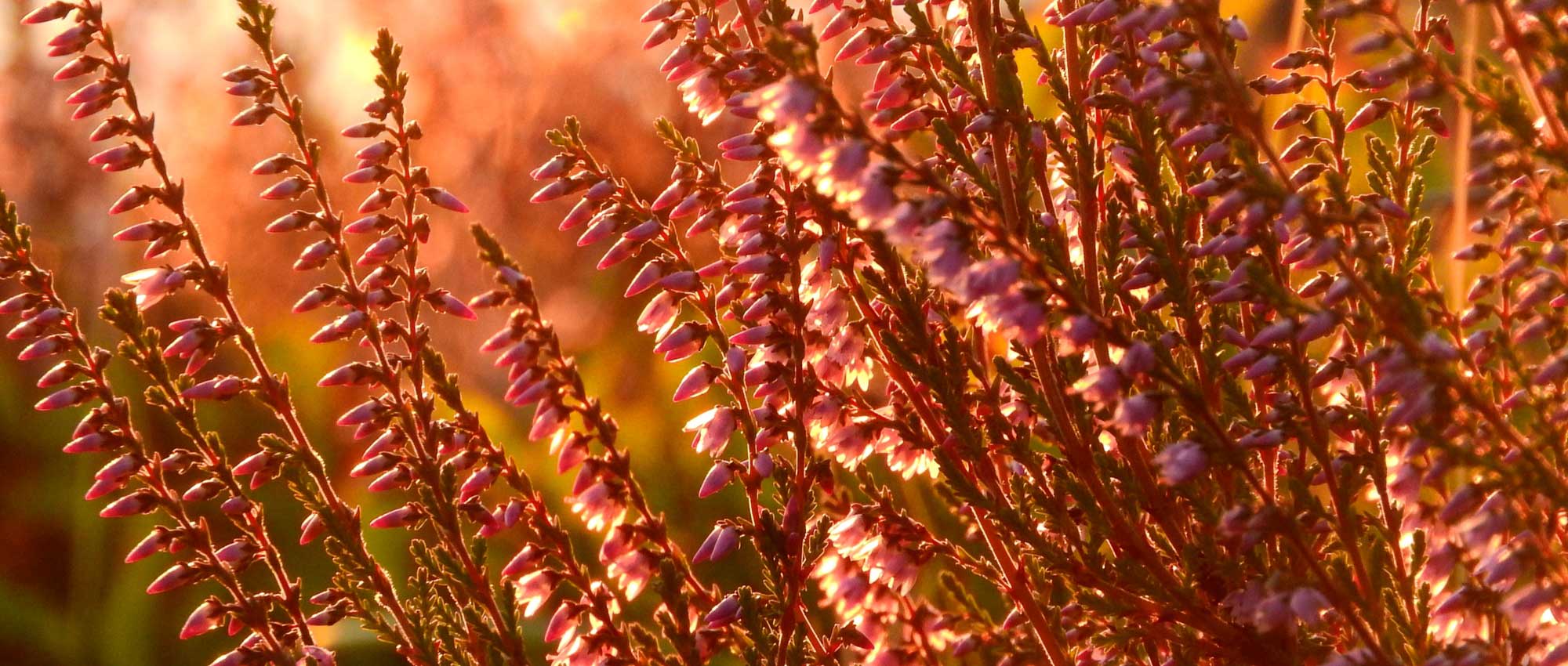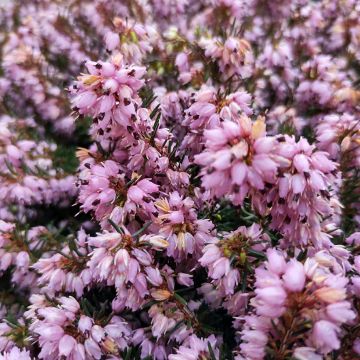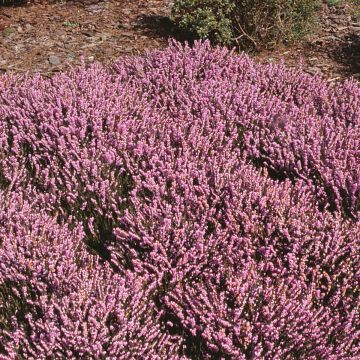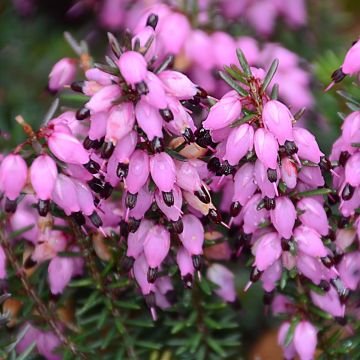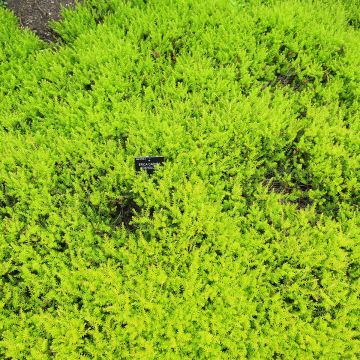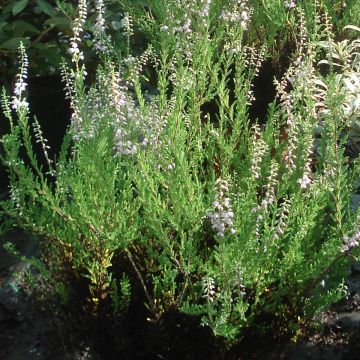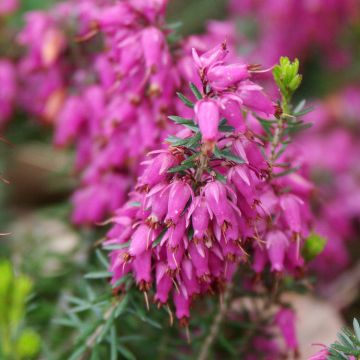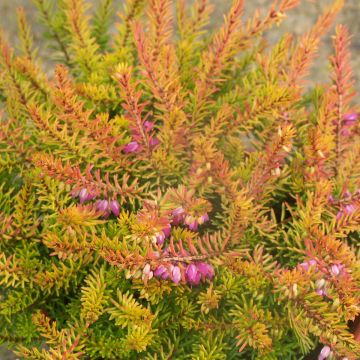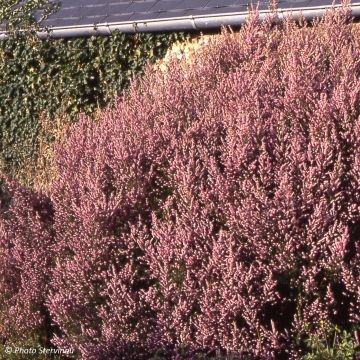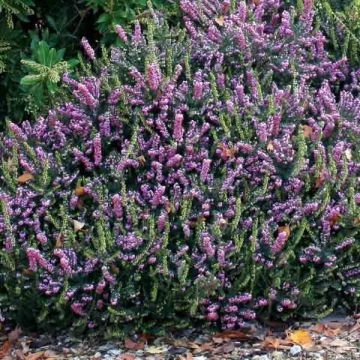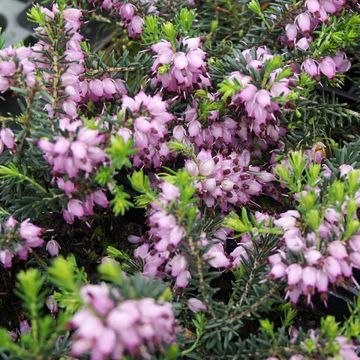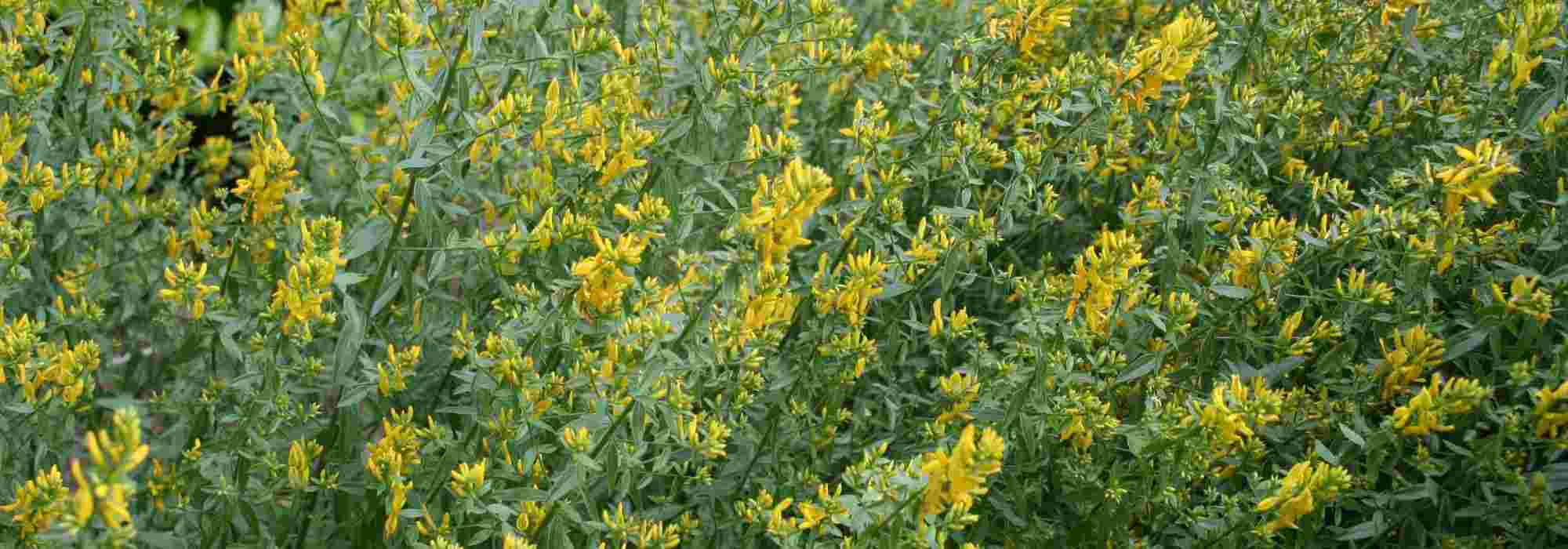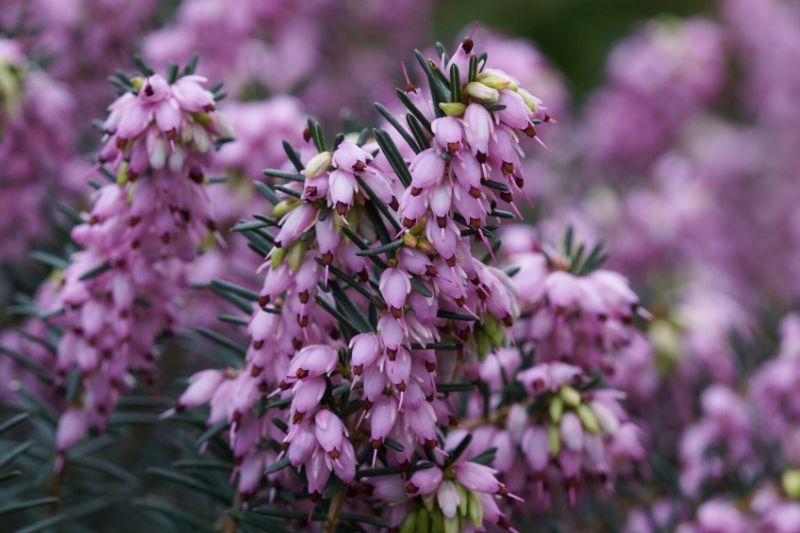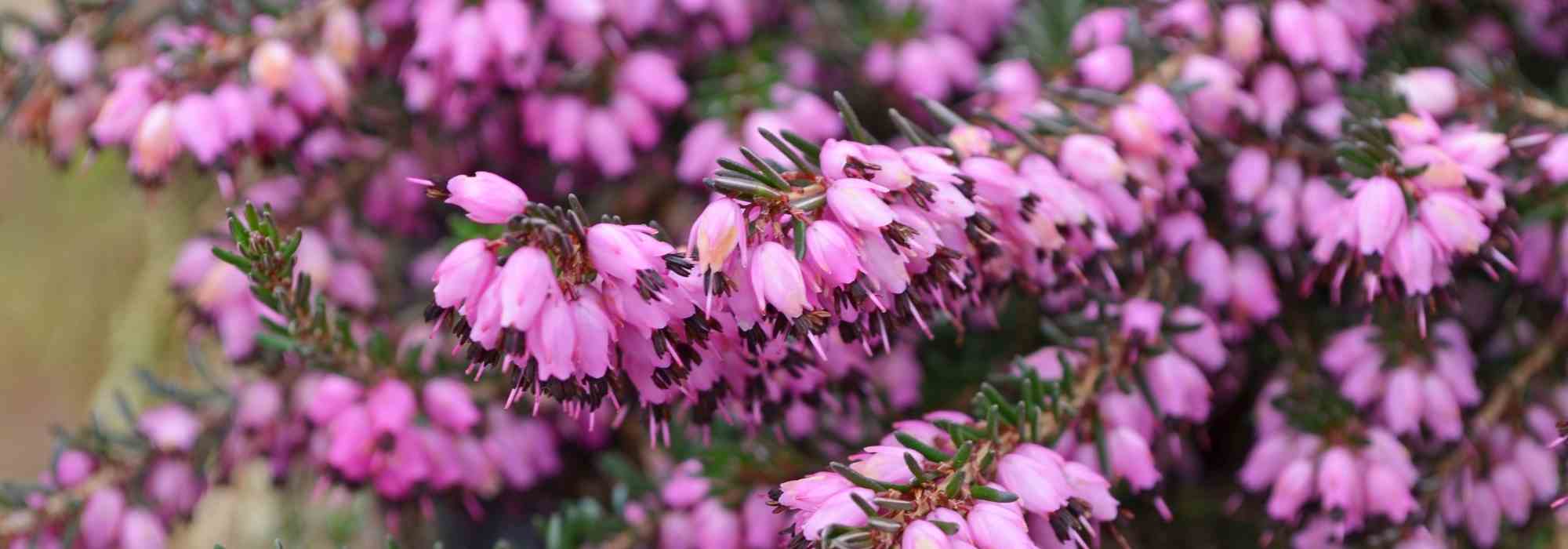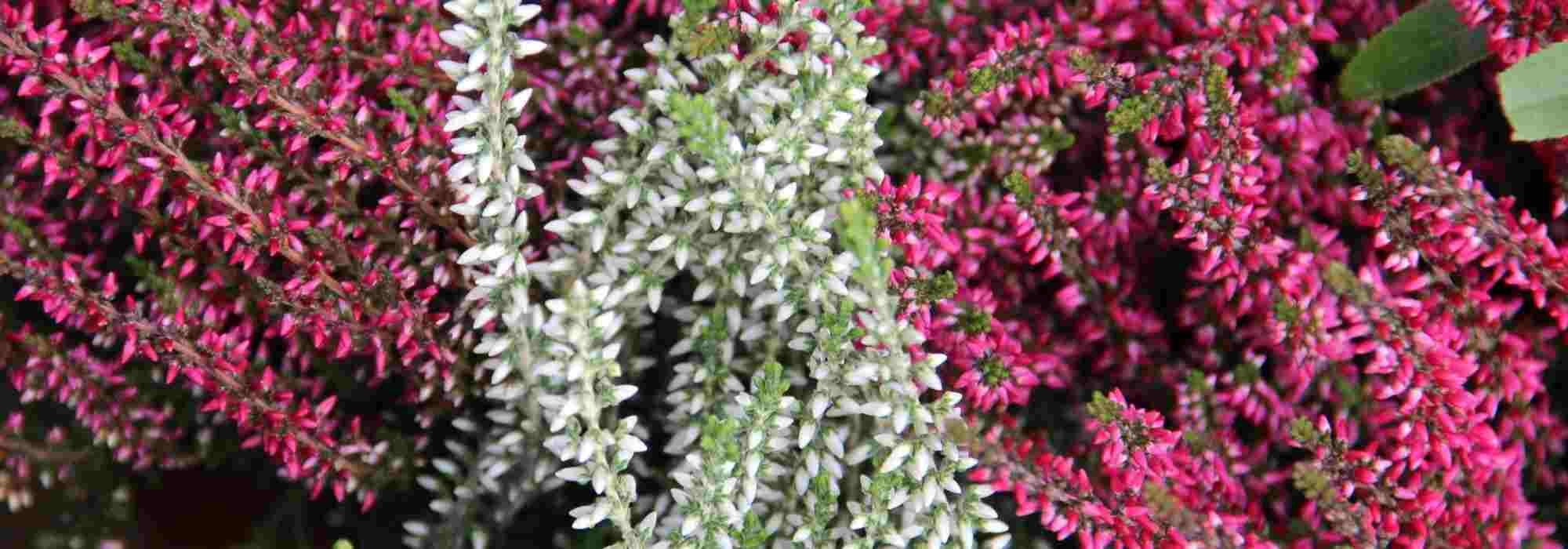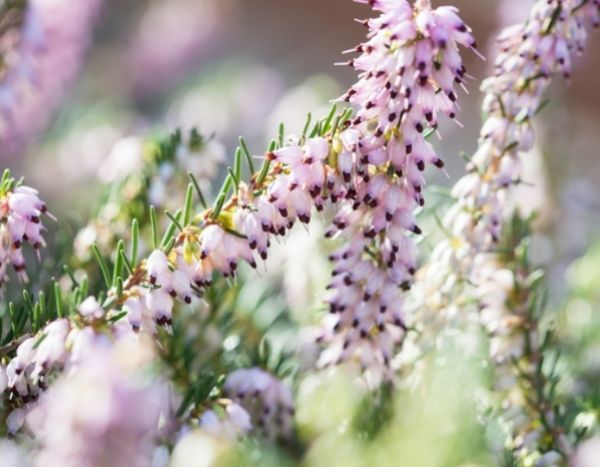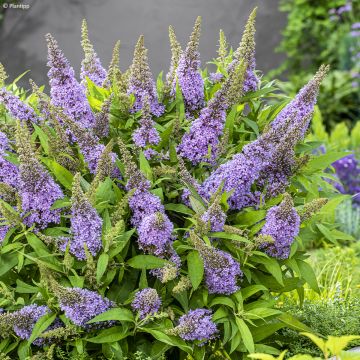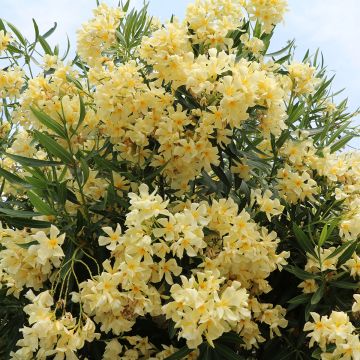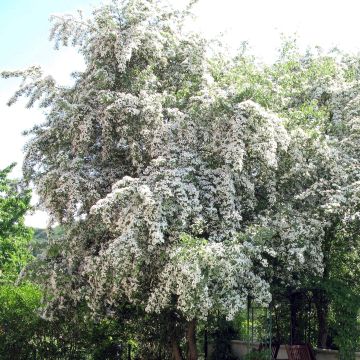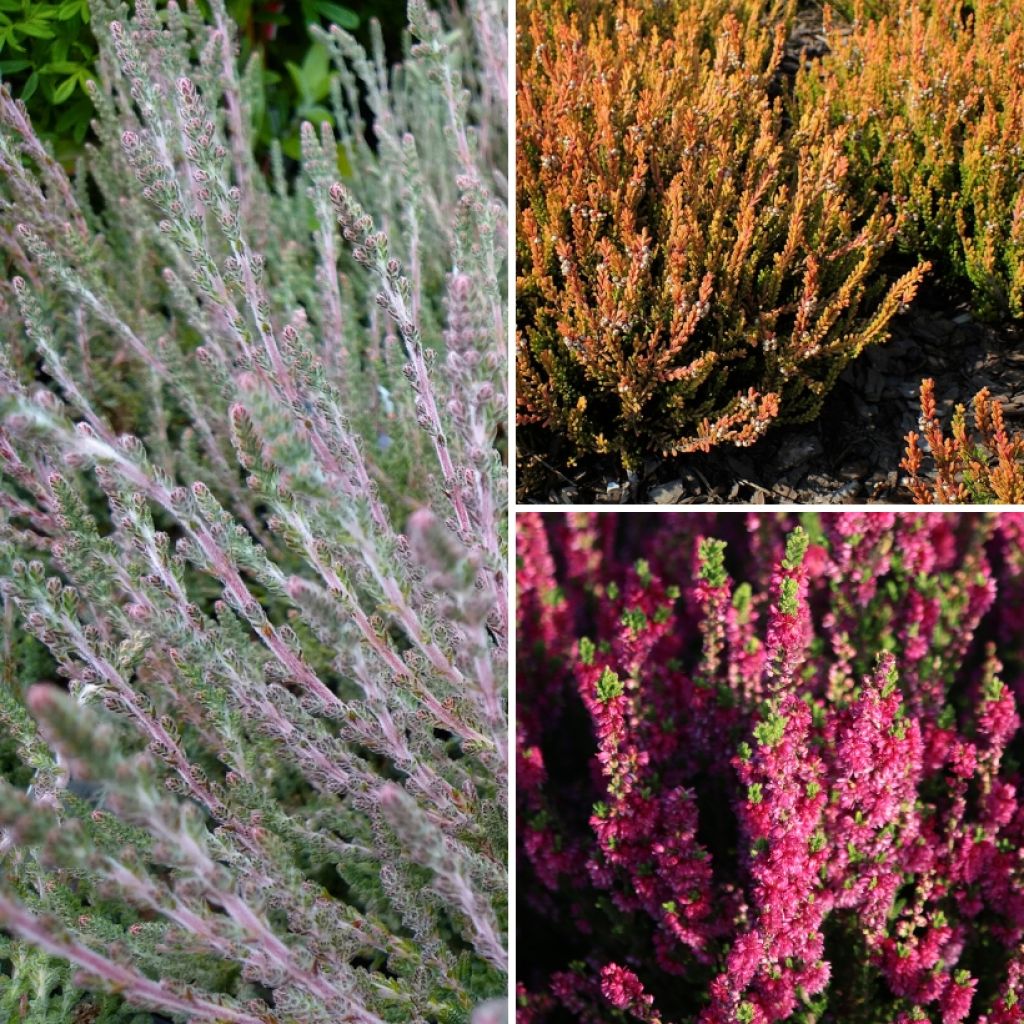

Calluna vulgaris collection - Summer Heather Collection
Calluna vulgaris collection - Summer Heather Collection
Calluna vulgaris Winter Chocolate, Dark Beauty, Silver Knight
Common Heather, Ling, Scotch Heather
Special offer!
Receive a €20 voucher for any order over €90 (excluding delivery costs, credit notes, and plastic-free options)!
1- Add your favorite plants to your cart.
2- Once you have reached €90, confirm your order (you can even choose the delivery date!).
3- As soon as your order is shipped, you will receive an email containing your voucher code, valid for 3 months (90 days).
Your voucher is unique and can only be used once, for any order with a minimum value of €20, excluding delivery costs.
Can be combined with other current offers, non-divisible and non-refundable.
This plant carries a 24 months recovery warranty
More information
We guarantee the quality of our plants for a full growing cycle, and will replace at our expense any plant that fails to recover under normal climatic and planting conditions.
Would this plant suit my garden?
Set up your Plantfit profile →
Collection items (3 plants)
Description
This is a collection of 3 Calluna vulgaris, better known as summer heathers. These undershrubs are characterised by needle-like foliage that persists in winter, a long nectar-rich flowering in late summer, and a low and wide habit. These heathers are small, bushy, colourful and compact plants which make a beautiful ground cover in rockeries, at the edge of flower beds, or in a pretty pot on the terrace. Like all Callunas, these varieties are hardy and grow in the sun in well-drained acidic soil (without limestone).
The collection consists of:
1 Summer Heather 'Winter Chocolate': a variety measuring 40 cm in height and 50 cm in width. Flowering from August to October with purple buds, becoming violet to pale lavender at full bloom. Orange foliage tinged with salmon red in spring, turning chartreuse green to orange-yellow in summer, then bronze in autumn, ending the year with a beautiful chocolate brown.
1 Summer Heather 'Dark Beauty': forming a ball 20 cm high and 35 cm wide, this cultivar blooms from mid-August to mid-October with semi-double flowers that are intermediate between dark pink and red. The light green of its foliage forms a beautiful combination with the flowering. It takes on bronze highlights in cold weather.
1 Summer Heather 'Silver Knight': this undershrub reaches 35 cm high and 45 cm wide. Its flowering begins from late July and extends until September-October. Small pink mauve flowers. Slightly silver foliage. It takes on a purple hue in cold weather.
This collection of Callunas should be planted in a light, sandy soil, without limestone, well-drained and truly acidic, with a pH between 4 and 6 (for example, composed of 1/3 ericaceous soil, 1/3 non-limestone garden soil, and 1/3 sand). Choose a sunny exposure in northern regions, and semi-shaded in warmer climates. Plan for 5 plants per square metre or space the plants 40 cm apart. The Summer Heathers collection is perfect in slightly wild areas of the garden, bringing colour throughout the year. It can be used alone or planted in groups with other varieties and cultivars of heathers (they are countless). For a long flowering period, imitate nature by mixing common heather (Calluna vulgaris) and bell heather (Erica cinerea). Use this collection of summer heathers to brighten up a rockery or border along a path. It also works well in pots and planters, creating beautiful seasonal compositions. Or in ericaceous flower beds, to adorn the base of rhododendrons and azaleas. You can create delightful, slightly wild scenes by planting 'Winter Chocolate' alongside grasses, ferns, and dwarf conifers at the base of white birches.
Plant habit
Flowering
Foliage
Botanical data
Calluna
vulgaris
Winter Chocolate, Dark Beauty, Silver Knight
Ericaceae
Common Heather, Ling, Scotch Heather
Cultivar or hybrid
Other Heather
View all →Planting and care
Heather is a characteristic plant of heathlands, turf moors, and pine forests. It is very hardy. This heather requires a light and sandy soil, without limestone, well-drained and truly acidic (for example, composed of 1/3 ericaceous soil, 1/3 non-limestone garden soil, and 1/3 sand), and thrives in a sunny or semi-shaded exposure. In northern regions, it is possible to plant them in full sun, while in hot climates, a semi-shaded exposure is preferable. To maintain a dense and compact habit, the plant should be lightly pruned in late winter or just after flowering.
Planting period
Intended location
Care
Planting & care advice
This item has not been reviewed yet - be the first to leave a review about it.
Similar products
Haven't found what you were looking for?
Hardiness is the lowest winter temperature a plant can endure without suffering serious damage or even dying. However, hardiness is affected by location (a sheltered area, such as a patio), protection (winter cover) and soil type (hardiness is improved by well-drained soil).

Photo Sharing Terms & Conditions
In order to encourage gardeners to interact and share their experiences, Promesse de fleurs offers various media enabling content to be uploaded onto its Site - in particular via the ‘Photo sharing’ module.
The User agrees to refrain from:
- Posting any content that is illegal, prejudicial, insulting, racist, inciteful to hatred, revisionist, contrary to public decency, that infringes on privacy or on the privacy rights of third parties, in particular the publicity rights of persons and goods, intellectual property rights, or the right to privacy.
- Submitting content on behalf of a third party;
- Impersonate the identity of a third party and/or publish any personal information about a third party;
In general, the User undertakes to refrain from any unethical behaviour.
All Content (in particular text, comments, files, images, photos, videos, creative works, etc.), which may be subject to property or intellectual property rights, image or other private rights, shall remain the property of the User, subject to the limited rights granted by the terms of the licence granted by Promesse de fleurs as stated below. Users are at liberty to publish or not to publish such Content on the Site, notably via the ‘Photo Sharing’ facility, and accept that this Content shall be made public and freely accessible, notably on the Internet.
Users further acknowledge, undertake to have ,and guarantee that they hold all necessary rights and permissions to publish such material on the Site, in particular with regard to the legislation in force pertaining to any privacy, property, intellectual property, image, or contractual rights, or rights of any other nature. By publishing such Content on the Site, Users acknowledge accepting full liability as publishers of the Content within the meaning of the law, and grant Promesse de fleurs, free of charge, an inclusive, worldwide licence for the said Content for the entire duration of its publication, including all reproduction, representation, up/downloading, displaying, performing, transmission, and storage rights.
Users also grant permission for their name to be linked to the Content and accept that this link may not always be made available.
By engaging in posting material, Users consent to their Content becoming automatically accessible on the Internet, in particular on other sites and/or blogs and/or web pages of the Promesse de fleurs site, including in particular social pages and the Promesse de fleurs catalogue.
Users may secure the removal of entrusted content free of charge by issuing a simple request via our contact form.
The flowering period indicated on our website applies to countries and regions located in USDA zone 8 (France, the United Kingdom, Ireland, the Netherlands, etc.)
It will vary according to where you live:
- In zones 9 to 10 (Italy, Spain, Greece, etc.), flowering will occur about 2 to 4 weeks earlier.
- In zones 6 to 7 (Germany, Poland, Slovenia, and lower mountainous regions), flowering will be delayed by 2 to 3 weeks.
- In zone 5 (Central Europe, Scandinavia), blooming will be delayed by 3 to 5 weeks.
In temperate climates, pruning of spring-flowering shrubs (forsythia, spireas, etc.) should be done just after flowering.
Pruning of summer-flowering shrubs (Indian Lilac, Perovskia, etc.) can be done in winter or spring.
In cold regions as well as with frost-sensitive plants, avoid pruning too early when severe frosts may still occur.
The planting period indicated on our website applies to countries and regions located in USDA zone 8 (France, United Kingdom, Ireland, Netherlands).
It will vary according to where you live:
- In Mediterranean zones (Marseille, Madrid, Milan, etc.), autumn and winter are the best planting periods.
- In continental zones (Strasbourg, Munich, Vienna, etc.), delay planting by 2 to 3 weeks in spring and bring it forward by 2 to 4 weeks in autumn.
- In mountainous regions (the Alps, Pyrenees, Carpathians, etc.), it is best to plant in late spring (May-June) or late summer (August-September).
The harvesting period indicated on our website applies to countries and regions in USDA zone 8 (France, England, Ireland, the Netherlands).
In colder areas (Scandinavia, Poland, Austria...) fruit and vegetable harvests are likely to be delayed by 3-4 weeks.
In warmer areas (Italy, Spain, Greece, etc.), harvesting will probably take place earlier, depending on weather conditions.
The sowing periods indicated on our website apply to countries and regions within USDA Zone 8 (France, UK, Ireland, Netherlands).
In colder areas (Scandinavia, Poland, Austria...), delay any outdoor sowing by 3-4 weeks, or sow under glass.
In warmer climes (Italy, Spain, Greece, etc.), bring outdoor sowing forward by a few weeks.

































